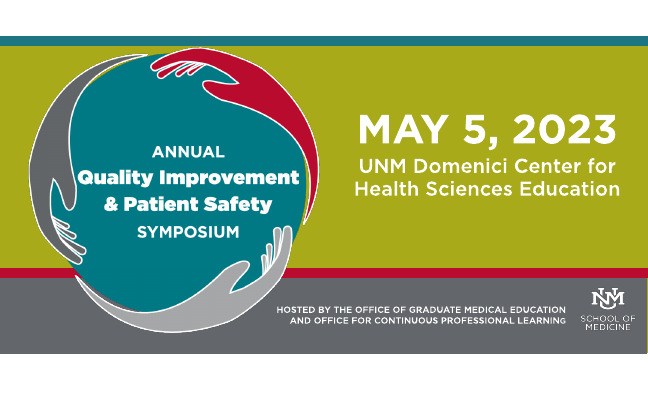Document Type
Poster
Publication Date
3-6-2020
Abstract
Introduction:
Patients who are diagnosed with HIV but not retained in medical care have been identified as one of the highest risks for new HIV transmissions and have higher rates of all cause mortality 1,2. Factors impacting retention in care include timely clinical follow up and timely prescription of anti-retroviral therapy3. We identified specific subpopulations among those living with HIV who are vulnerable to being lost to follow up, namely: patients newly diagnosed with HIV and patients transitioning across the healthcare system, such as those newly discharged from inpatient facilities 4,5. We reviewed the processes for ensuring these populations receive timely follow up and are rapidly prescribed anti-retroviral therapy.
Materials/Methods:
Four aims were identified:
Aim 1: Ensure 100% of patients newly diagnosed with HIV are scheduled to be seen by a prescribing provider within 3 business days of being identified
Aim 2: Ensure 85% of all patients living with HIV who are newly enrolled at University of New Mexico Truman Health Services (UNM THS) are prescribed highly active antiretroviral therapy (HAART) within 7 business days of being seen by a prescribing provider
Aim 3: Ensure 85% of all patients seen in the UNM THS Transitions in Care (TIC) Clinic are prescribed HAART within 7 days of their first TIC appointment
Aim 4: Ensure 100% of patients who are discharged after a UNM Hospital stay are scheduled to be seen by a prescribing provider within 7 business days of being discharged
Data were gathered from the electronic health record and the quality database from UNM THS to determine if these aims were met in the 12 months prior to project implementation. Hospital discharge data was further analyzed by detailed chart review of individual patients discharged from UNMH from October 1, 2018 to September 30, 2019.
Results:
Aim 4 regarding hospital discharge follow up was identified as the most in need of further study and intervention. The clinic policy states all patients must be seen by a prescribing provider with in 7 days of discharge. Our analysis showed: 15% of patients were scheduled for FU within 7 days of discharge, 48% were scheduled within 10 days of discharge, and 62% were not seen within 10 days. Of those: 49% were not scheduled at all, 32% were scheduled after 10 days, 9% canceled or rescheduled appointments, and 8% did not attend scheduled appointments.
Conclusion:
We developed an intervention to improve the appropriate scheduling for post-hospital discharge follow up for patients living with HIV. This includes clarification of the Centers for Medicare and Medicaid (CMS) requirements, education around the clinic policy, assessment of barriers to implementing the policy, and addressing these barriers. To achieve this aim, we are currently implementing a survey to assess knowledge of and practice around post-hospital discharge follow up among nurses and primary care clinicians. We have also established a pharmacist clinician-run subspecialty clinic to allow all patients to receive specialized medication reconciliation after hospital discharge and increase appointment capacity. We will evaluate the efficacy of this intervention in 3 months.
References
1. Li Z, Purcell DW, Sansom SL, Hayes D, Hall HI. Vital Signs: HIV transmission along the continuum of care - United States, 2016. MMWR Morb Mortal Wkly Rep. 2019;68:267-72.
2. Sabin CA, Howarth A, Jose S, et al. Association between engagement in-care and mortality in HIV-positive persons. AIDS. 2017;31:653-660.
3. Guidelines for Managing Advanced HIV Disease and Rapid Initiation of Antiretroviral Therapy. Geneva: World Health Organization; 2017. 3, RECOMMENDATION FOR RAPID INITIATION OF ART. Available from: https://www.ncbi.nlm.nih.gov/books/NBK475972/
4. Risher KA, Kapoor S, Daramola AM, et al. Challenges in the Evaluation of Interventions to Improve Engagement Along the HIV Care Continuum in the United States: A Systematic Review. AIDS Behav. 2017;21:2101-2123.
5. Glordano TP, Glifford AL, White AC, et al. Retention in care: a challenge to survival with HIV infection. Clin Infect Dis. 2007 Jun 1;44(11):1493-9. Epub 2007 Apr 23.
Recommended Citation
Jackson, Quinn; Tracy M. Carlson; Lisette Infante; Lauretta England; Alan Saint; and Natalie Mariam Salas. "Truman Health Services Transitions in Care Clinic Quality Improvement Initiative." (2020). https://digitalrepository.unm.edu/hsc_qips/14


Comments
Presented at the University of New Mexico Health Science 2020 Annual Quality Improvement and Patient Safety Symposium